Time, and life, seem to race by faster than we can imagine.
That hit me after turning 35 earlier this year. Only five years from forty, with the first streaks of gray appearing in my hair, I realized that I’ve been an adult for almost half of my life now.
It seems like I took those big steps to adulthood just yesterday: starting my first grown-up job, figuring out my career path, and taking on responsibilities like (gulp) talking on the phone with other adults.
One experience perfectly captured all of those moments. After my freshman year of college at NC State, I came back to my hometown to work for the local school system over the summer, mainly fixing and installing computers as part of their IT team.
As I finished work one June afternoon, I got a call – on my first cell phone, no less. It was from the sports editor of the local newspaper, the Kernersville News, for which I’d previously done some freelance writing. This time, he had a new assignment for me.
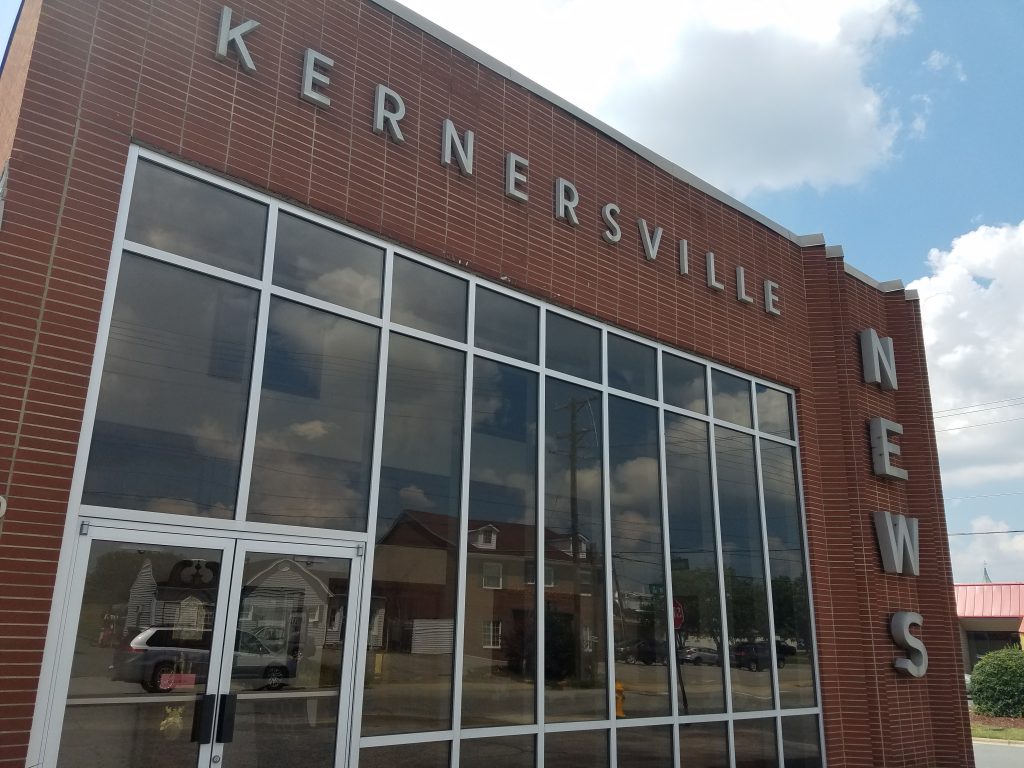
There’s this father and son that race at Bowman Gray Stadium, and they live here in Forsyth County. I want you to write an article about them. Call ‘em up and talk to them. Get something to me in a week.
For the next few days after work, I wrote and rewrote interview questions, researched their racing history, and dreaded making that phone call.
Talking to strangers doesn’t come easy to me as it is, and it made me even more nervous to think about interrupting the evening of two racers – battle-hardened by the track so tough, it’s called the Madhouse – who’d surely rather be turning wrenches than having a Q&A with some junior journalist.
But I couldn’t lose pace with the race of life. It was time to make the call.
After a few minutes of introductions and small talk, I realized my preconceptions couldn’t have been more wrong.
The Packs were both friendly, down-to-earth gentlemen who were easy to talk to and even easier to listen to as they shared stories of their racing background.
The father, Gene, told me about his nearly three decades of on-track experience, but his pride in consecutive track championships was exceeded by his pride in his son, who took to racing as a teenager despite his mother’s hesitations.
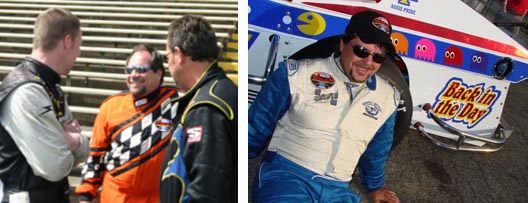
Likewise, Brian — a race winner in his rookie season — could only be sidelined for one reason, it seemed: taking care of a family of his own, including a wife and three kids, who eventually entered the go-kart ranks themselves to follow in their father’s and grandfather’s footsteps.
While Gene and Brian admitted they were as competitive against each other as any drivers on the track, it was clear that racing wasn’t a device to divide them. Rather, that time spent at the shop, in the pits, and on the track brought them together.
As my article summarized, “blood, at least in the Pack family, is thicker than oil.”
Lines like that one came easily as I was writing. In fact, the article’s opening sentence — that in the Pack family, racing must be part of their DNA — stemmed from a statement Brian made, punctuated by laughter, just after we started talking.
The toughest part was fitting the rich details of our half-hour conversation into less than 1,000 words. Instead of including a sampling of everything, I stuck to a theme, and it was easy to find one from this father-and-son racing duo. Family was a part of — and a reason for — everything they did.
I put the finishing touches on that article inside a stuffy school library just before Independence Day in 2006 and emailed it to my editor, making sure to meet the deadline so it could be published the following weekend.
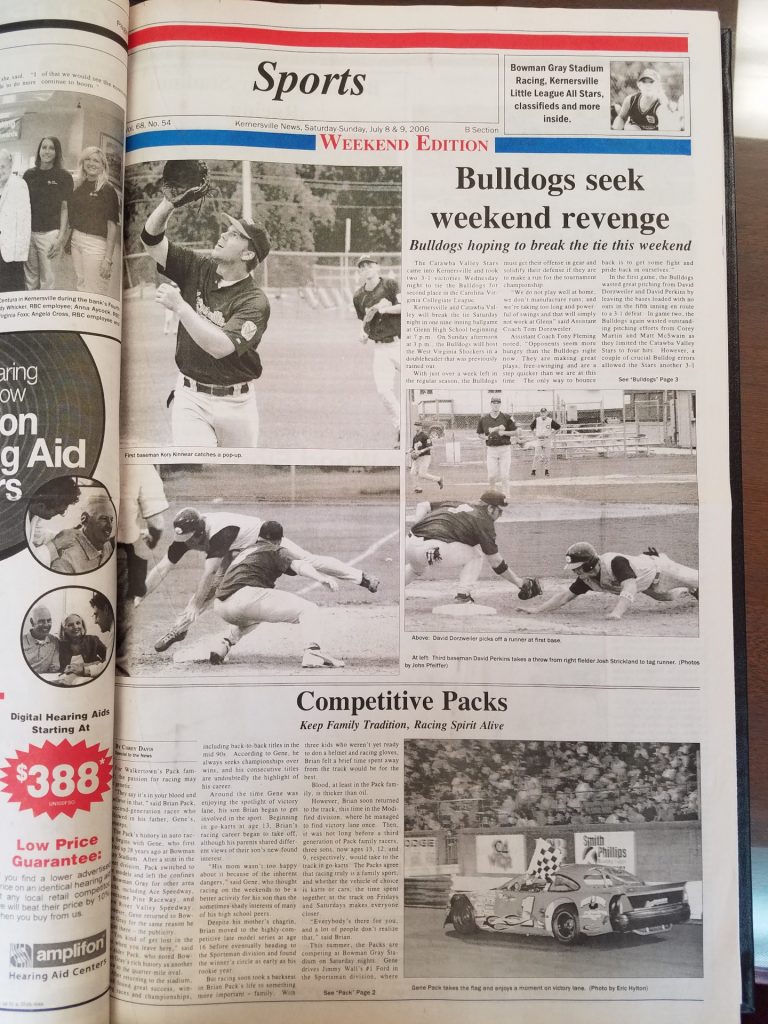
Sure enough, on Saturday, July 8, I picked up the paper and found my story on the front page of the sports section.
While it was always an accomplishment to see my name and my work in print, I was particularly proud of this article – both because of the story it told, and because of the efforts I’d gone to in assembling it.
It even had the sort of ending that brings a grin to the face of the writer and readers alike. Father and son say they’ll continue to compete, so “it looks like the rest of the field will have to deal with the Pack family for a while longer.”
Sometimes, the race of life ends short of its anticipated distance, no matter how well it seems to be going.
Just over two years after I wrote my profile of the racing Pack family, they were met with unthinkable tragedy.
Brian Pack died on July 25, 2008, at age 34.
It wasn’t from racing, like his mother once feared. Nor was it a consequence of being caught up with the wrong crowd, like some might expect given the fists-flying, cops-called, racer-retaliating reputation of the Madhouse.
Instead, it was from a motorcycle crash while driving home. He wasn’t speeding, nor had he been drinking.
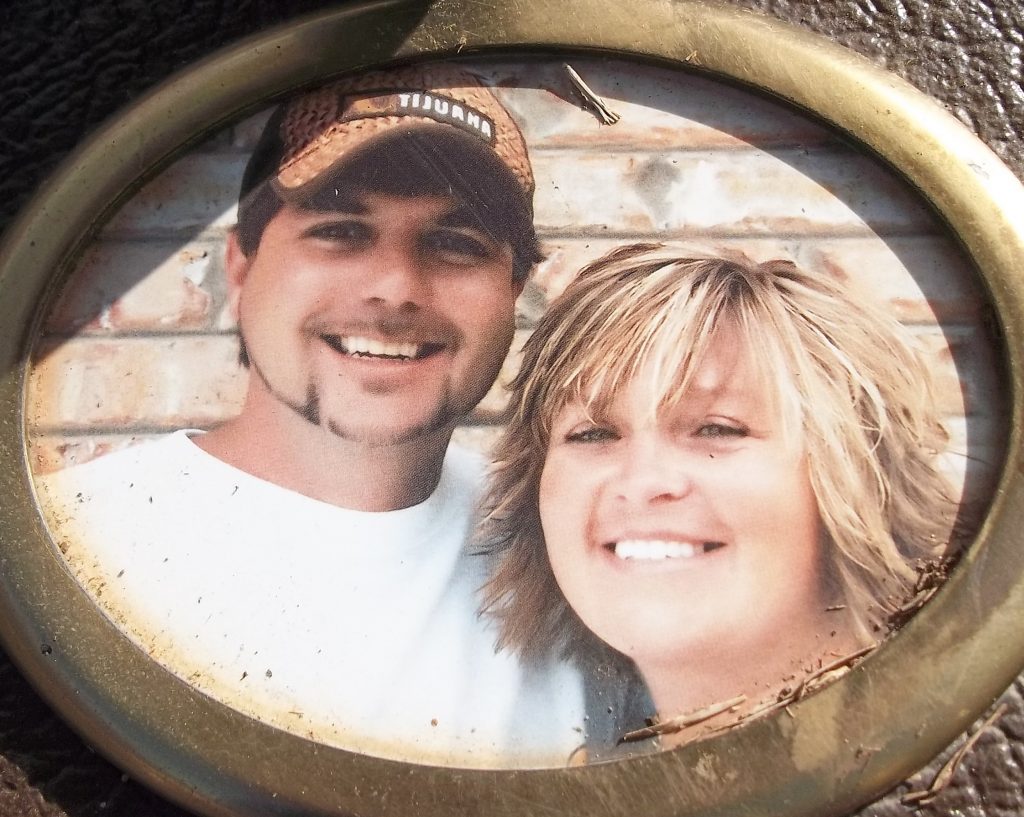
An expert at navigating Bowman Gray’s flat turns on four wheels, Brian apparently made a mistake while riding back roads on two.
“It looks like he didn’t negotiate that curve properly,” State Trooper TD Shaw told the Winston-Salem Journal, as reported by Speed51.com. “It’s just one of those accidents.”
In the days and weeks that followed, Bowman Gray and the modified racing paddock overflowed with support for the Packs. That was no surprise; as Brian himself told me of the racing community, “everybody’s there for you.”
He paused.
“And a lot of people don’t realize that.”
It has now been sixteen years since I interviewed the Packs and fourteen since Brian’s death. In that time, Gene retired from driving after the 2010 season, and Brian’s son Austin spent a few years behind the wheel, earning the NASCAR Whelen Southern Modified Tour’s rookie of the year award in 2011 before stepping away from racing in 2015.
As for me, the love of writing rekindled after talking to the Packs has continued, both as a hobby and as part of my current job.
Despite the gray hairs, at age 35, I’d like to think I’ve got at least half of my life still ahead of me, but who can ever anticipate those red flags that suddenly stop a race in its tracks?
Most people dread the passage of time. It’s a reminder that they’re getting older. That their days are numbered. That their greatest goals or loftiest ambitions may never be achieved.
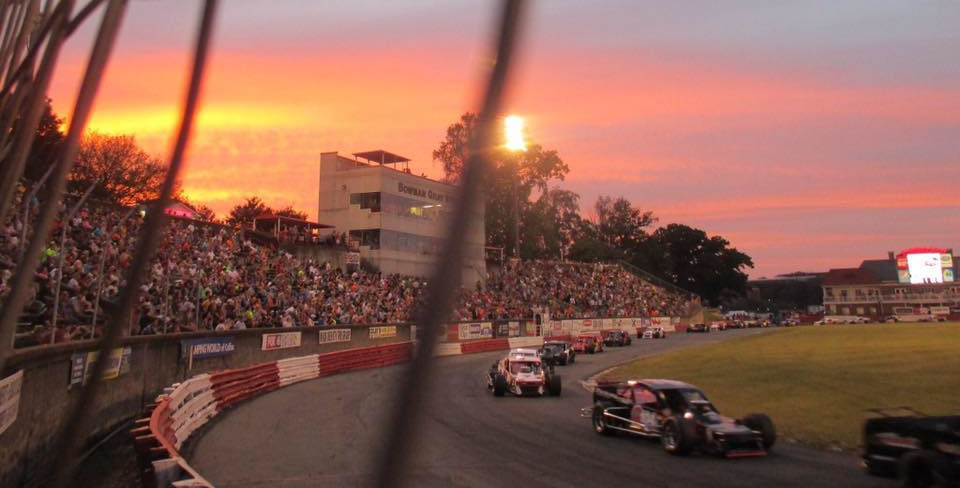
But not racers. They view time as a challenge: just as much of an opponent as any competitor. They literally cut corners to maximize — or minimize, as it were — their time on the track.
At a place like Bowman Gray, where passing chances are limited and the laps go by in a hurry, time is all about seizing the opportunities you have.
As I reread my profile of the Packs – printed below in its entirety – and suppress smiles from the memories it brings back while looking past some awkward stylistic elements and word choices I made in my younger days, I can’t help but think that what’s really important in life is making the most of the time you have.
The race is on, so you better not let it leave you behind.
Competitive Packs Keep Family Tradition, Racing Spirit Alive
From the Kernersville News Weekend Edition: July 8 & 9, 2006
For Walkertown’s Pack family, the passion for racing may be genetic.
“They say it’s in your blood and I believe in that,” said Brian Pack, a second-generation racer who followed in his father, Gene’s, footsteps.
The Pack’s history in auto racing begins with Gene, who first suited up 28 years ago at Bowman Gray Stadium. After a stint in the street division, Pack switched to late models and left the confines of Bowman Gray for other area tracks, including Ace Speedway, Lonesome Pine Raceway, and New River Valley Speedway. However, Gene returned to Bowman Gray for the same reason he began there – the publicity.
“You kind of get lost in the mix when you leave here,” said the elder Pack, who noted Bowman Gray’s rich history as another draw to the quarter-mile oval.
After returning to the stadium, Pack found great success, winning races and championships, including back-to-back titles in the mid 90s. According to Gene, he always seeks championships over wins, and his consecutive titles are undoubtedly the highlight of his career.
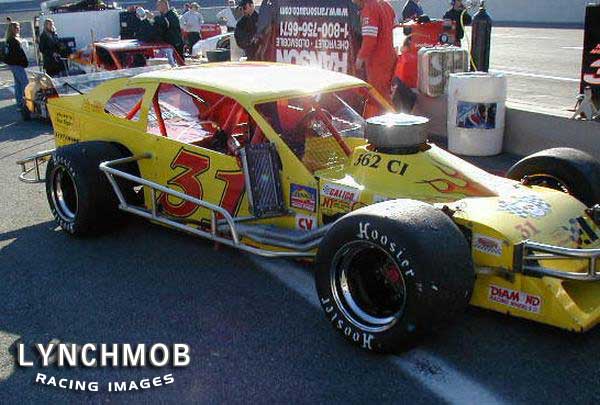
Around the time Gene was enjoying the spotlight of victory lane, his son Brian began to get involved in the sport. Beginning in go-karts at age 13, Brian’s racing career began to take off, although his parents shared different views of their son’s new-found interest.
“His mom wasn’t too happy about it because of the inherent dangers,” said Gene, who thought racing on the weekends to be a better activity for his son than the sometimes-shady interests of many of his high school peers.
Despite his mother’s chagrin, Brian moved to the highly competitive late model series at age 16 before eventually heading to the Sportsman division and found the winner’s circle as early as his rookie year.
But racing soon took a backseat in Brian Pack’s life to something more important — family. With three kids who weren’t yet ready to don a helmet and racing gloves, Brian felt a brief time spent away from the track would be for the best.
Blood, at least in the Pack family, is thicker than oil.
However, Brian soon returned to the track, this time in the Modified division, where he managed to find victory lane once. Then, it was not long before a third generation of Pack family racers, three sons, now ages 13, 12, and 9, respectively, would take to the track in go-karts. The Packs agree that racing truly is a family sport, and whether the vehicle of choice is karts or cars, the time spent together at the track on Fridays and Saturdays makes everyone closer.
“Everybody’s there for you, and a lot of people don’t realize that,” said Brian.
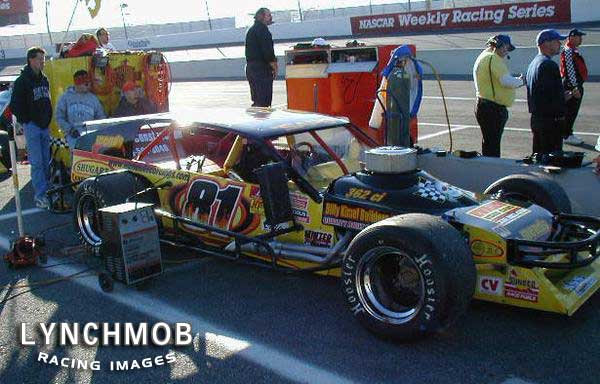
This summer, the Packs are competing at Bowman Gray Stadium on Saturday nights. Gene drives Jimmy Wall’s #1 Ford in the Sportsman division, where he sits fourth in points, and owns fellow Sportsman competitor Spider Kimel’s #31 car. Brian is currently thirteenth in the Modified standings driving the #52 car for Grady Jeffreys, though his position is not indicative of recent performances.
“We started out rough,” said Brian, who had several mechanical woes early in the season, but has since recorded three straight top-ten finishes, including a third place finish on June 17.
On weekends when they’re not in action at Bowman Gray, the Packs are frequently competing in the NASCAR Whelen Southern Modified Tour, a regional series for its namesake cars which competes at tracks such as Caraway Speedway, Hickory Motor Speedway, and even Bowman Gray. Brian Pack currently sits fourth in points with dad breathing down his neck, just 19 points behind in sixth place.
So who’s helping who the most? According to Brian, it’s father helping son more right now, but five years ago, he said, it was a different story. And don’t think that sharing a little friendly advice means there isn’t a friendly rivalry on the track.
“If anyone’s competitive on the track, it’s us,” said Gene, “whether we’re racing for fifth or fifteenth.”
Don’t expect their competition to end any time soon, either. Brian says he’s happy right where he’s at in his racing career, and Gene says he plans to keep racing as long as it’s enjoyable and he has moderate success. And with the way their seasons are shaping up, it looks like the rest of the field will have to deal with the Pack family for a while longer.